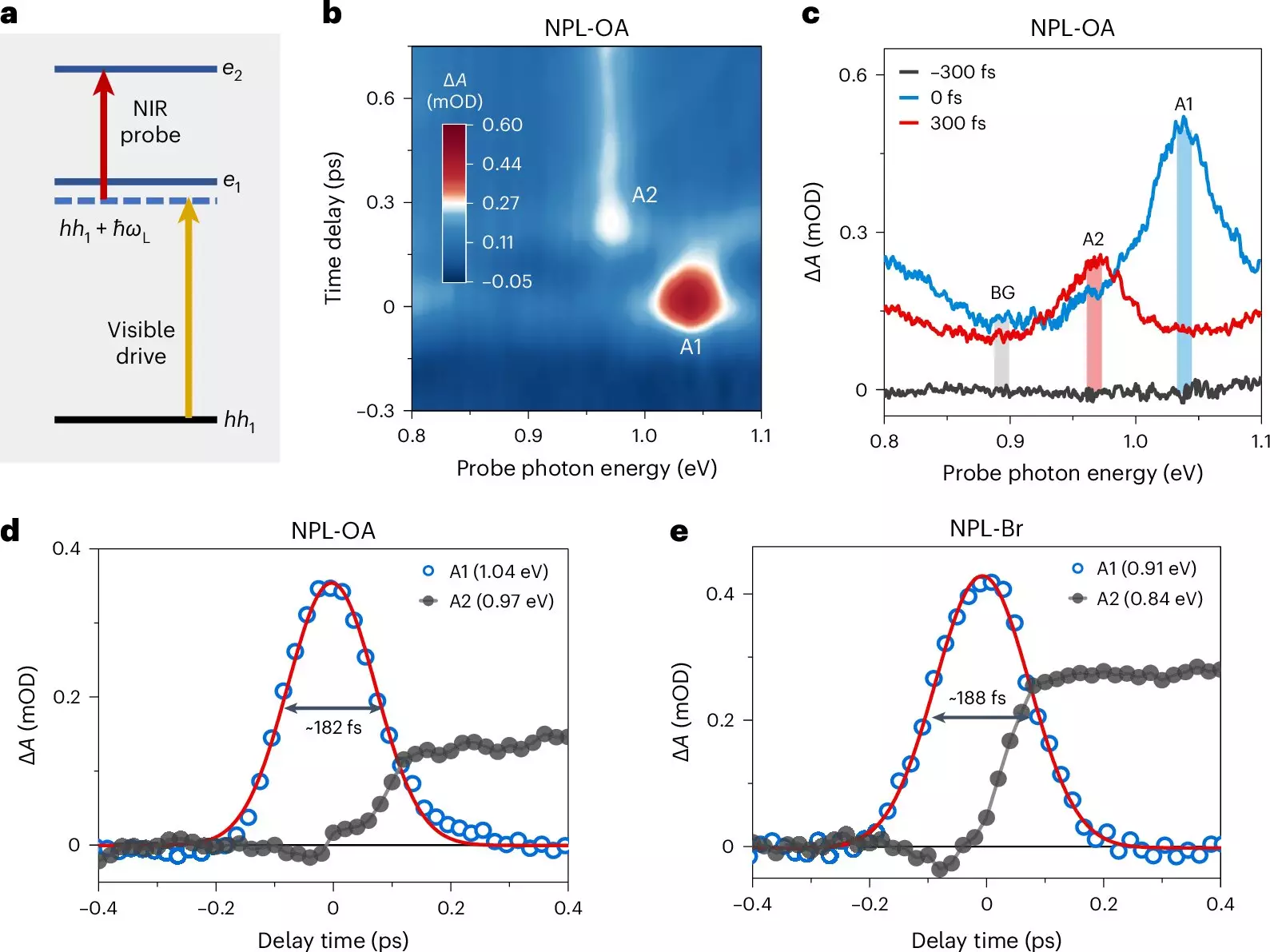Colloidal quantum dots (QDs), often produced through solution processes, represent a pioneering class of semiconductor nanocrystals that have become a focal point of modern physics and materials science. While the underlying principle of size-dependent quantum effects has intrigued scientists for decades, the ability to convert this theoretical concept into tangible nanostructures only materialized with the advent of QDs. These nanocrystals provide visual representations of quantum phenomena, displaying a range of colors that correspond to their size. This phenomenon allows researchers to analyze and manipulate quantum effects in ways that were previously deemed impossible.
The ongoing exploration of quantum phenomena using QDs has led scientists to investigate exciting capabilities such as single-photon emission and quantum coherence manipulation. Quantum mechanics posits that light and matter interact in intricate ways, and phenomena such as Floquet states—where photons enhance the quantum states of a material—play a critical role in the understanding of these interactions. However, the experimental validation of Floquet states has posed significant challenges. Traditional experimental setups often required low temperatures and high vacuum conditions, limiting the scope of research and the environments in which these quantum states could be effectively studied.
A recent breakthrough, reported by a team led by Prof. Wu Kaifeng from the Dalian Institute of Chemical Physics, marks a significant advancement in optical physics. Their research, published in *Nature Photonics*, details the first successful observation of Floquet states in semiconductors under ambient conditions. This achievement shifts the paradigm, suggesting that intricate quantum phenomena can be studied without the stringent conditions typically required.
The researchers employed quasi-two-dimensional colloidal nanoplatelets that exhibit exceptional quantum confinement. This unique structure facilitates interband and intersubband transitions in areas such as the visible and near-infrared spectrum. Such transitions create a delicate three-level system where a sub-bandgap photon is able to manipulate the states within the semiconductor, effectively allowing researchers to probe these states with precision.
One of the standout contributions of this study is the enhanced understanding of how transient Floquet states, often perceived as short-lived, can lead to real populations of electron states within femtoseconds. By using all-optical spectroscopy to examine the behavior of these states in real-time, the researchers demonstrated that the purported fading of Floquet states is a misinterpretation; instead, these states transition seamlessly into observable electron populations. This nuanced understanding could dramatically expand our capabilities in quantum optoelectronics and photonic devices.
Prof. Wu’s insights underline the profound implications of this work, not just for the scientific community but also for potential technological applications. By elucidating the spectral and dynamic properties of Floquet states, we could enter a new era of quantum materials where the optical responses can be finely tuned. This encompasses not only the manipulation of light in semiconductor devices but also extends to controlling chemical reactions at surfaces and interfaces using nonresonant light fields.
As we further our understanding of QDs and their associated quantum effects, we are likely to witness a significant leap in applications across various fields—from energy harvesting and LED technology to advanced quantum computing systems. As research continues to unfold, the intersection of quantum physics and material science will pave the way for innovations that may one day redefine how we harness and utilize light and energy at the quantum level.
The research spearheaded by Prof. Wu and his team majorly advances our comprehension of Floquet states while also exploring their application in real-world environments. This merger of quantum theory with experimental observation promises a fertile ground for future innovations, reinforcing the importance of colloidal quantum dots in the advancing narrative of quantum science.


Leave a Reply